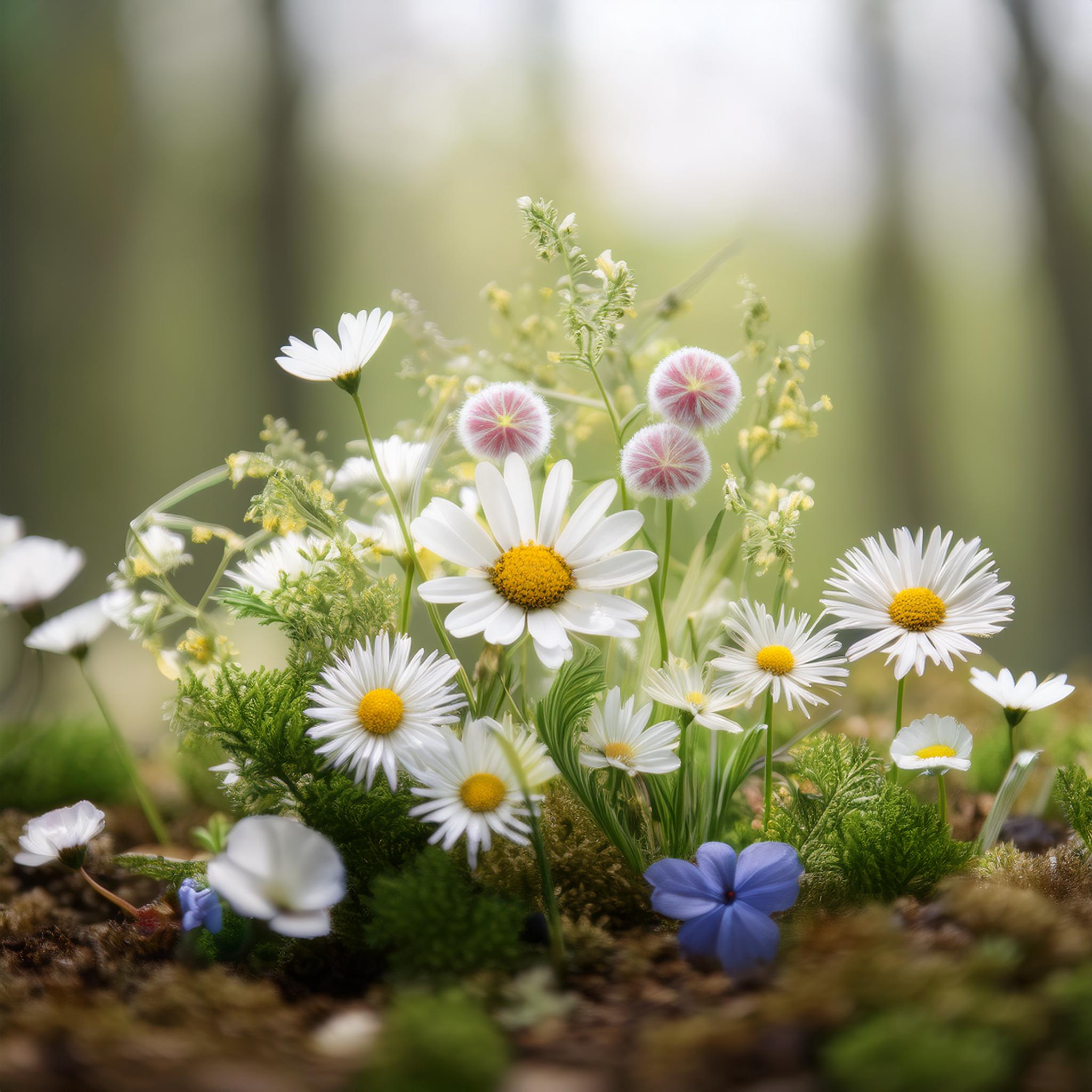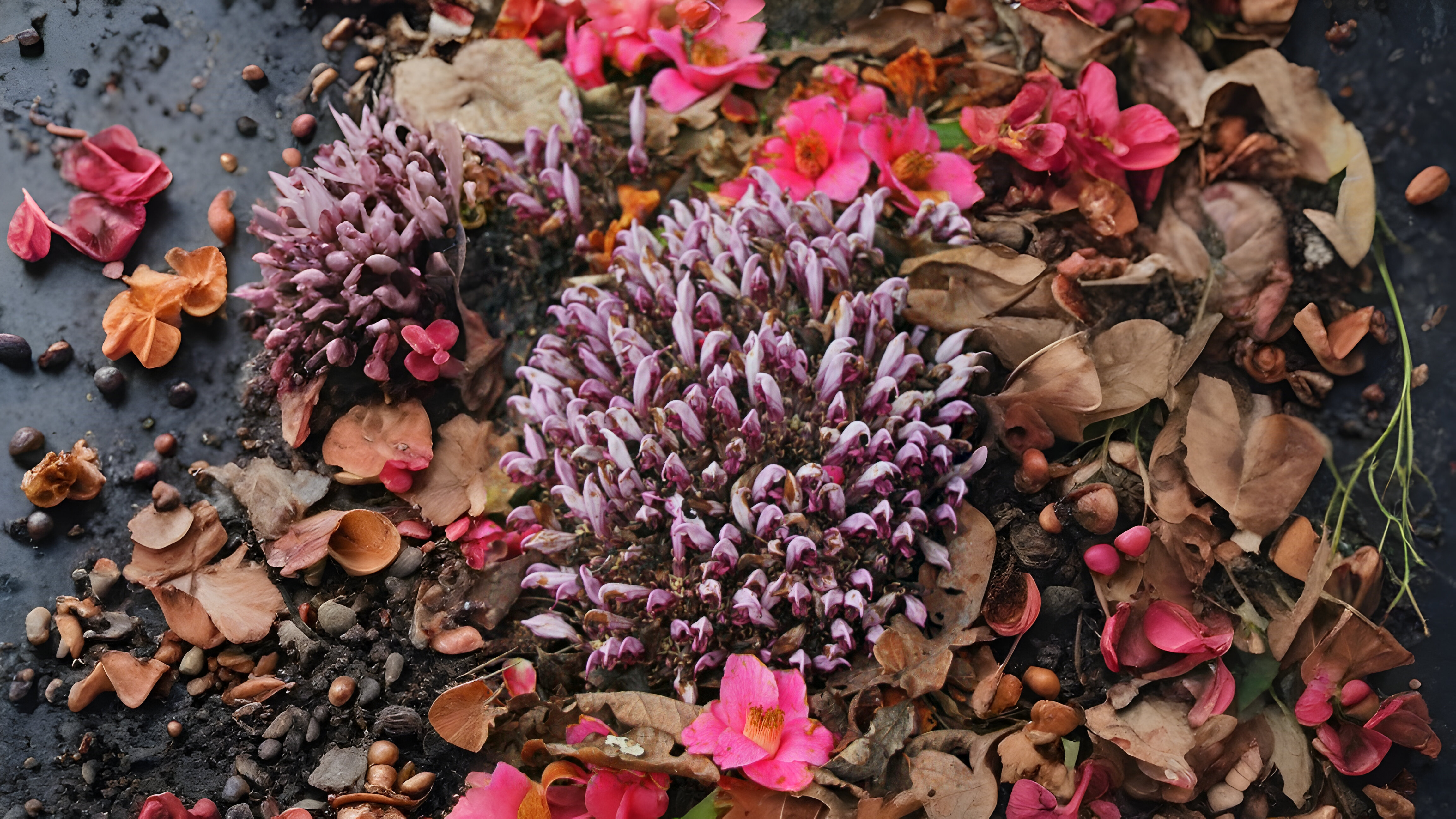As February progresses, the landscape begins to transform with the first wild flowers of the year. Join us on February 22nd to explore the early bloomers that signal the arrival of spring. From the delicate daisies and vibrant dandelions to the rare and intriguing toothwort, discover the beauty and diversity of February's wild flowers. Learn about the unique characteristics and historical significance of these plants as they emerge from their winter slumber. Don't miss this opportunity to witness the greening of the landscape and the promise of warmer days ahead. Mark your calendars and prepare to celebrate the floral awakening of February!
Flowering times do vary from year to year. Cold temperatures and low rainfall are usually the main culprits of late flowering and recent warmer winters for early ones. Be that as it may, the first appearances of flowers are usually in the same sequence. There is a gradual ‘greening’ throughout London during February. Although at the beginning of the month there are still only a handful of plants in flower, many more are already pushing up fresh, green growth through their old, dead remains of last year. Later many early seedlings start to appear on bare soil, their fresh green seed leaves sometimes forming a bright, green carpet. Nearly all the plants seen last month are even brighter this month. Winter heliotrope Petasites fragrans is the exception, having such a short flowering period. Its flowers are sometimes over by February and its strong, bright green leaves may now be emerging to take their place. Daisies are becoming more common. This “wee, modest crimson-tipped flower” as Robert Burns described it, is just starting to produce more of the rich crimson colour on the back of its white petals. Daisies are rarely out of flower and can usually be found somewhere every month of the year. For this reason medieval knights wore them in tournaments as a token of their constant fidelity.
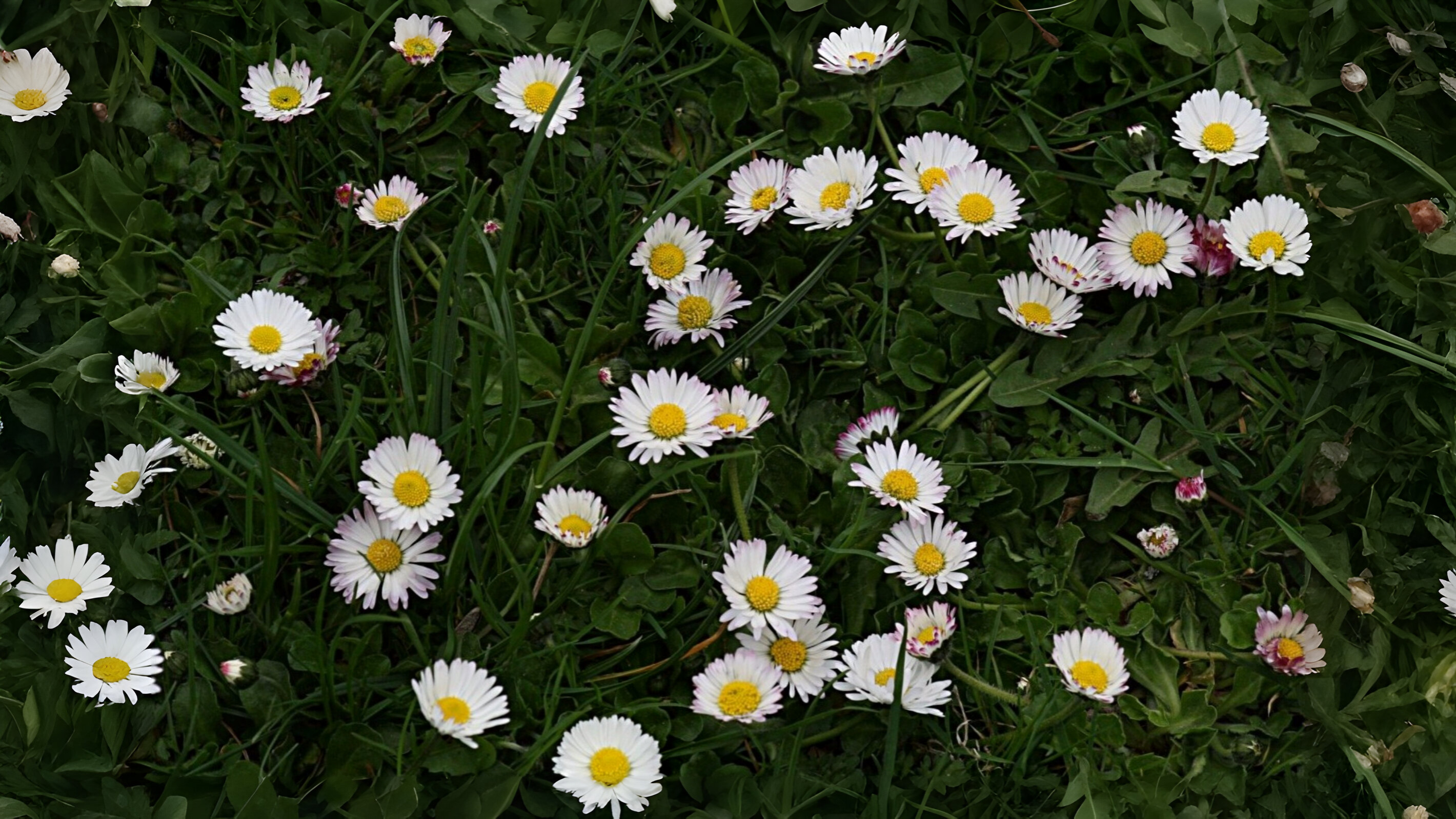
Along the edges of streams, still water and wet woods, town hall clock Adoxa moschatellina may with luck be encountered. It prefers soft, moist soil where it can easily extend its rhizomes, forming a close carpet of plants. It only reproduces asexually, having lost its ability to produce fertile seed. Consequently, if its habitat is destroyed by man, it has no ability to return. This has led to its present restricted distribution. Not surprisingly, its flower is the shape of a green four-sided town hall clock.
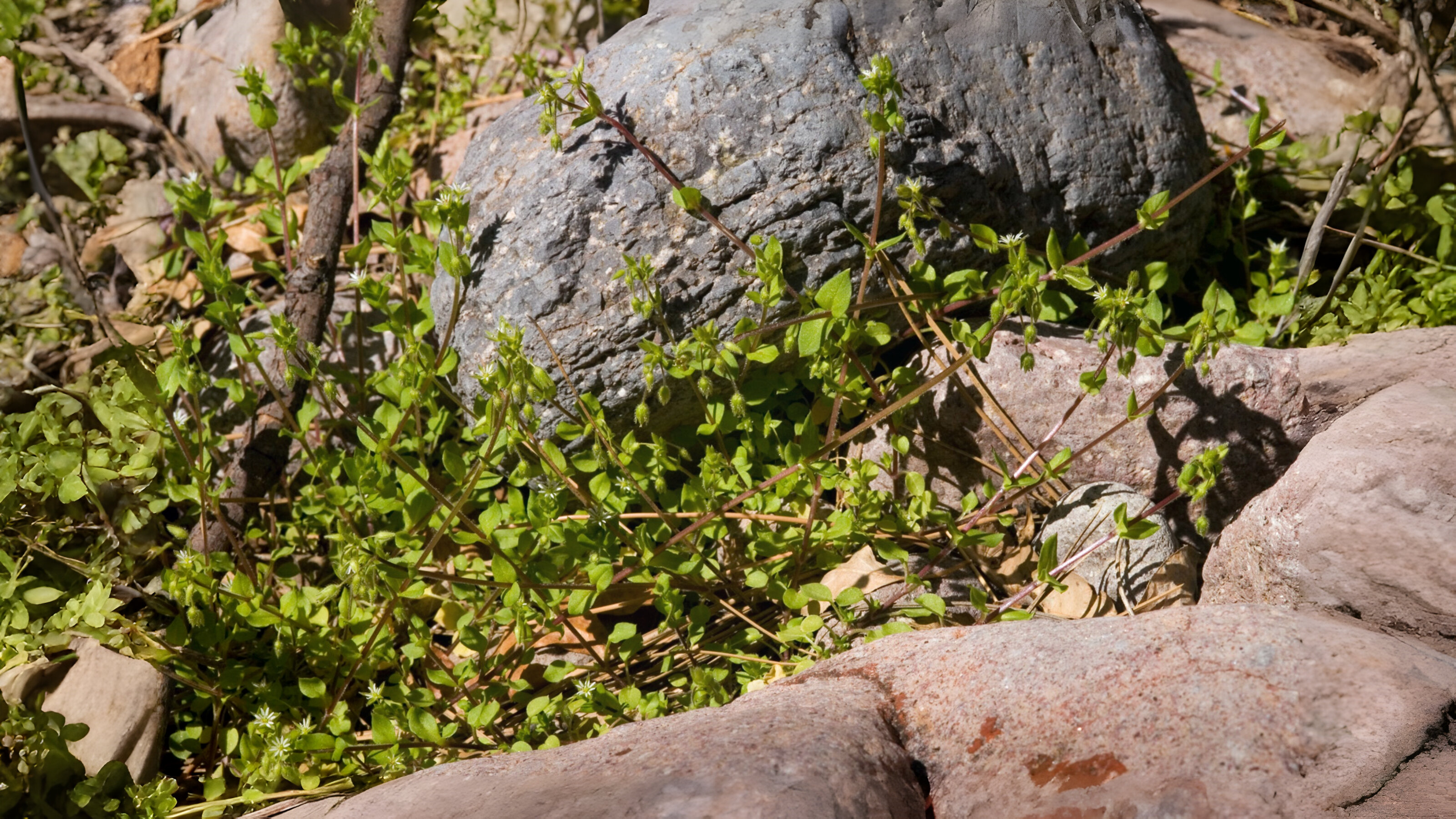
Dandelions now open for the first time this year. They were at one time a little extravagantly called ‘the sunflowers of spring’. Their roots were a popular coffee substitute, thought to be as good as chicory. Groundsel, relished by caged birds, is equally common. Its roots when dug up produce a scent that was thought to relieve headaches.
Common chickweed Stellaria media is also popular with caged birds and used to be sold in bunches on London streets. Its tiny white flowers can be seen this month set among resilient leaves that can look as fresh in winter as they do in summer. The number of speedwells Veronica spp is also now starting to increase. They have a tendency to produce small patches of sky blue flowers on lawns and paths, each flower projecting two diagnostic stamens. As yet, it will only be the early species i.e. common speedwell V. persica, wall speedwell V. arvensis, ivy-leaved speedwell V. serpyllifolia, germander speedwell V. chaemaedrys and the grey field speedwell V. polita.
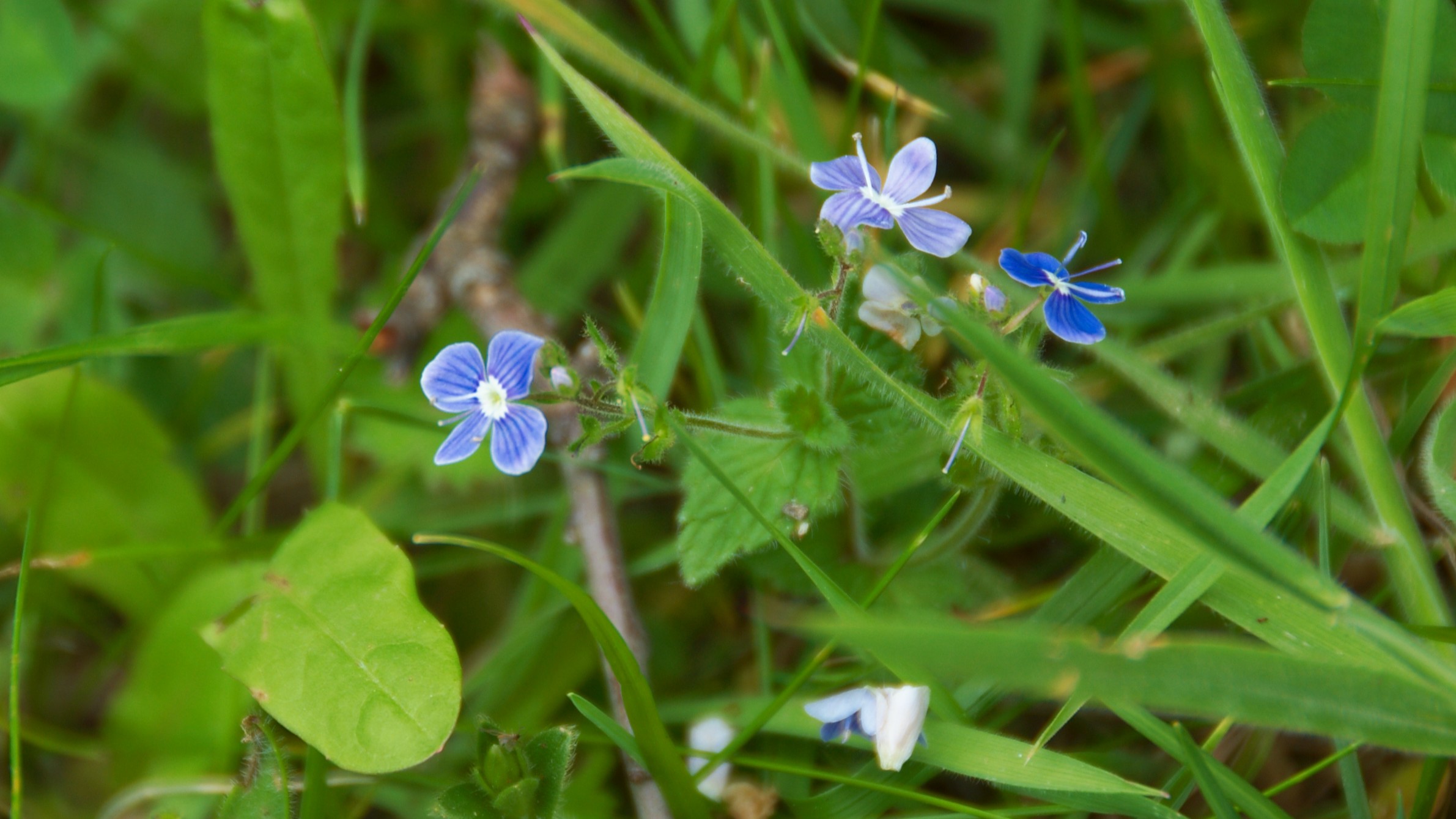
Wood sorrel Oxalis acetosella has remained green all winter and the excessively hairy leaves of bulbous buttercup Ranunculus bulbosus are now easier to distinguish. They may even produce the first buttercup of the year. Also in woods, the shiny, firm leaves of bluebells Endymion non-scriptus, sometimes called snouts, are pushing through and untidy piles of the felty leaves of foxgloves Digitalis purpurea are appearing here and there. Rosettes of mulleins, thistles and teasels also all now stand out. Dog’s mercury Mercurialis perennis is very common in London woods, with its single-sexed individual plants. The plants that have long, hanging flower stalks are usually male and those which have short ones are female.
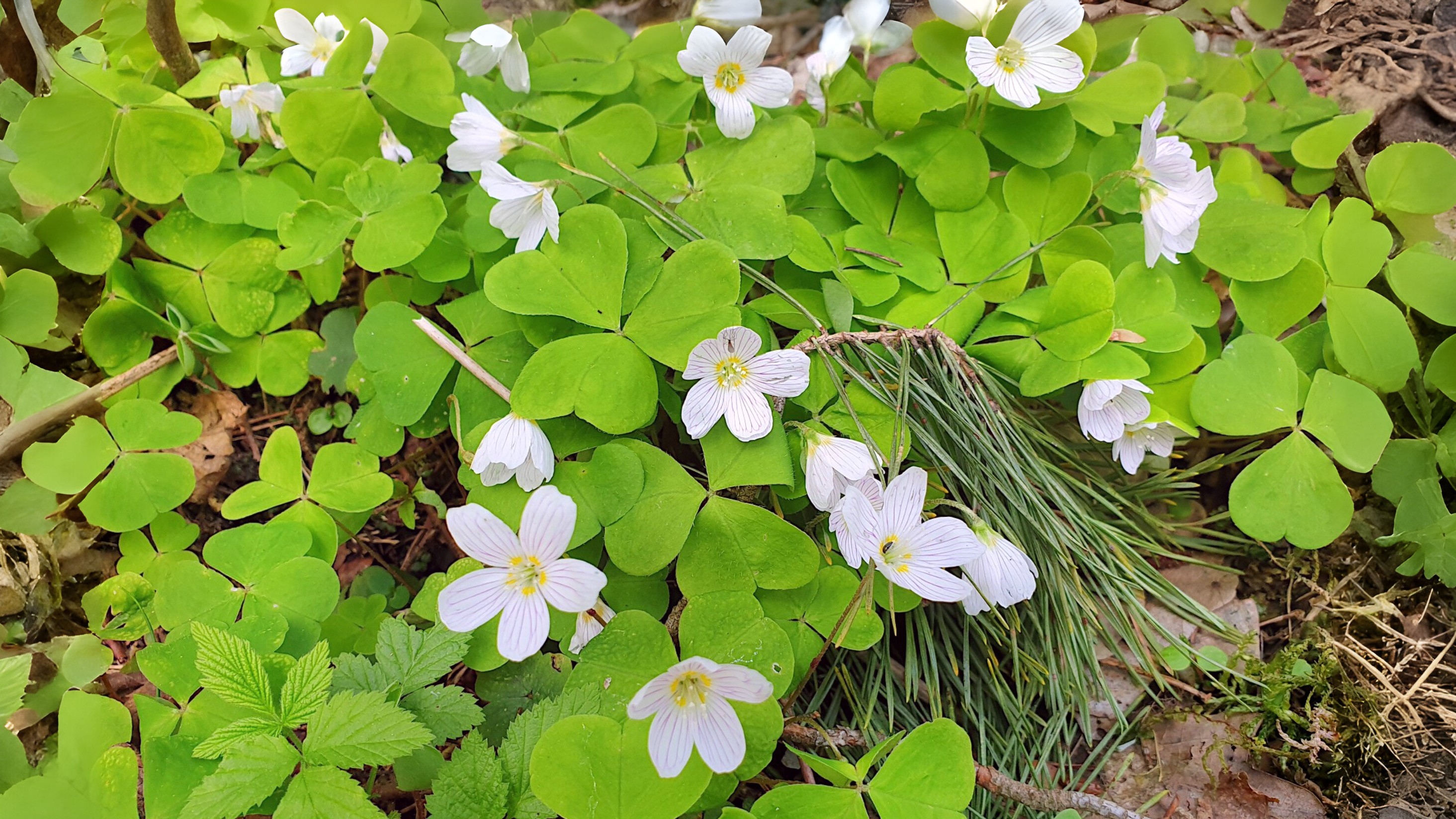
In older woods, the evergreen Butcher’s broom Ruscus aculeatus can also be in flower, as well as simultaneously carrying its bright red berries. These long-lived plants are believed to be indicators of ancient woodland. What look like the leaves are actually flattened stems. In the centre of these ‘leaves’ sit tiny green star-shaped flowers. Bunches of the stems may possibly at one time have been used to clean butcher’s blocks.
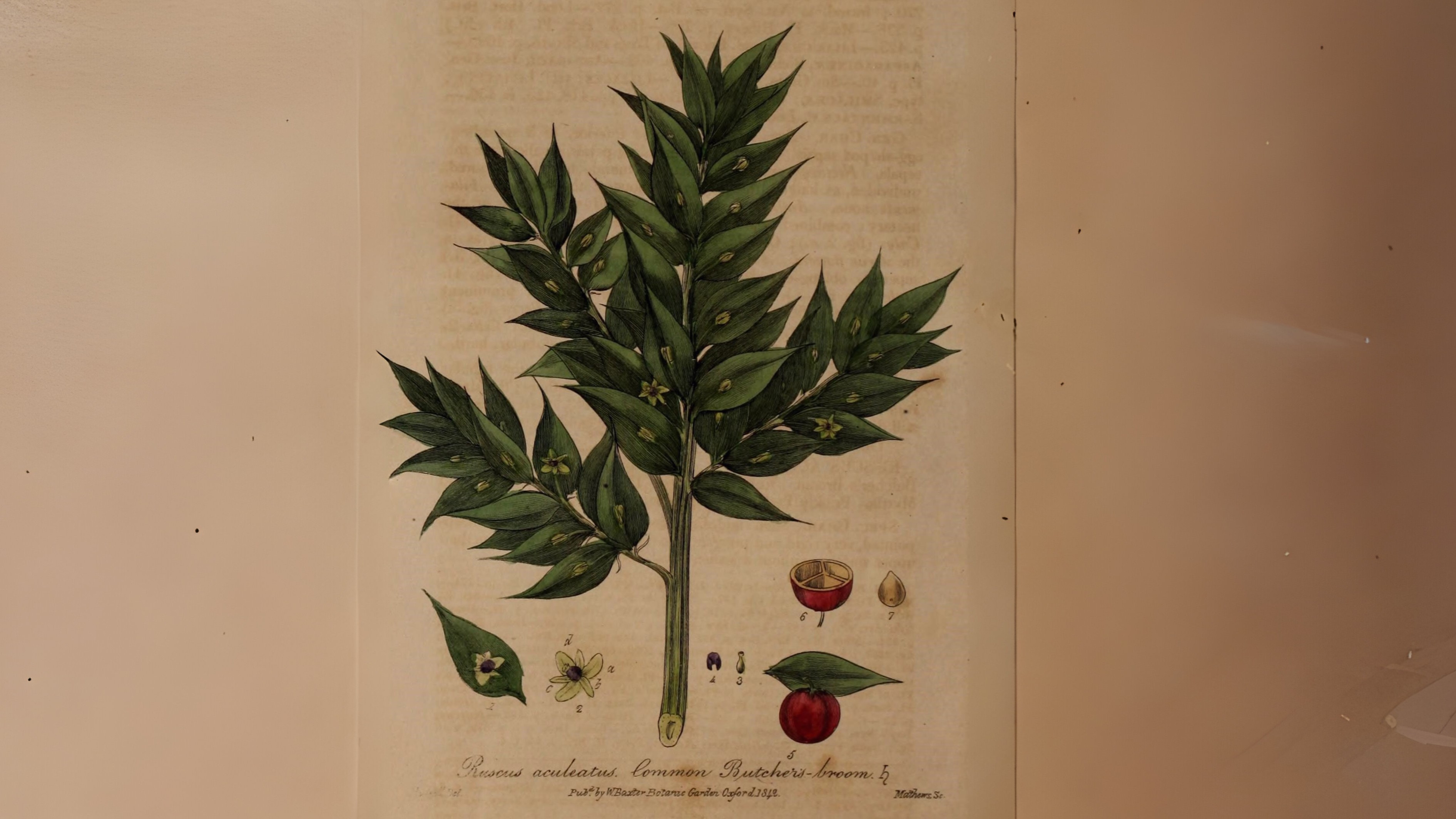
More rarely, the strange toothwort Lathraea squamaria is found, with its sinister-
looking leaves which resemble teeth. It was also called the corpse flower as it was thought to grow where bodies were buried. It can still be found in some abundance at High Elms. Its rarer flamboyant garden relation, the purple toothwort Lathraea clandestina still grows in Cannizaro Park. ‘Clandestina’, meaning ‘hidden’, presumably refers to more buried bodies.
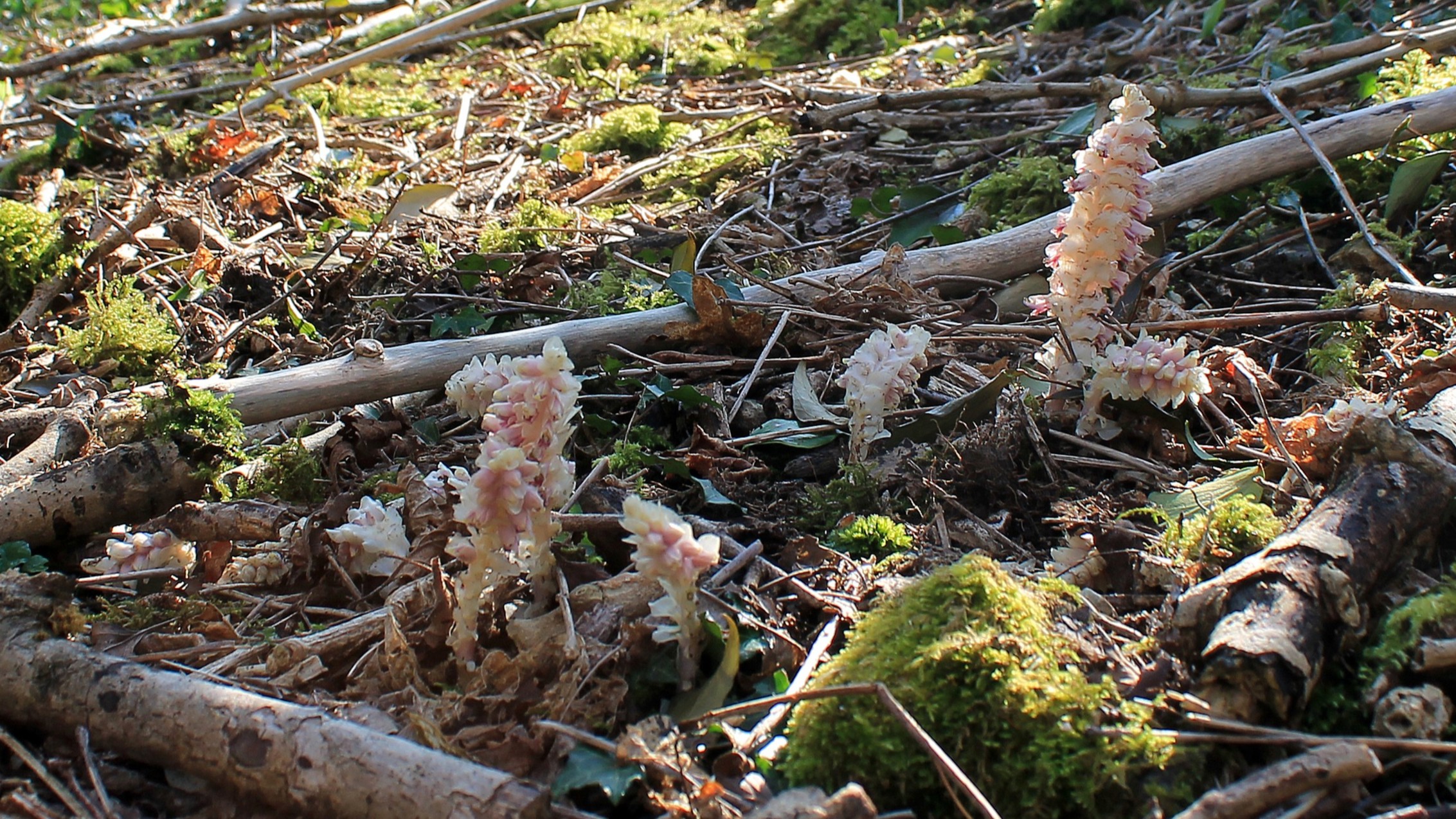
Another dramatic flower that can be seen this month is the stinking hellebore Helleborus foetidus. It is very rare in the wild, but still occurs in one or two shady woods on the chalk around the Box Hill area. Its alternative name of setterwort refers to the medieval practice of settering. This was when a piece of the plant’s root was inserted into a cow’s dewlap to protect it from the plague.
